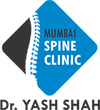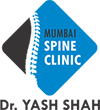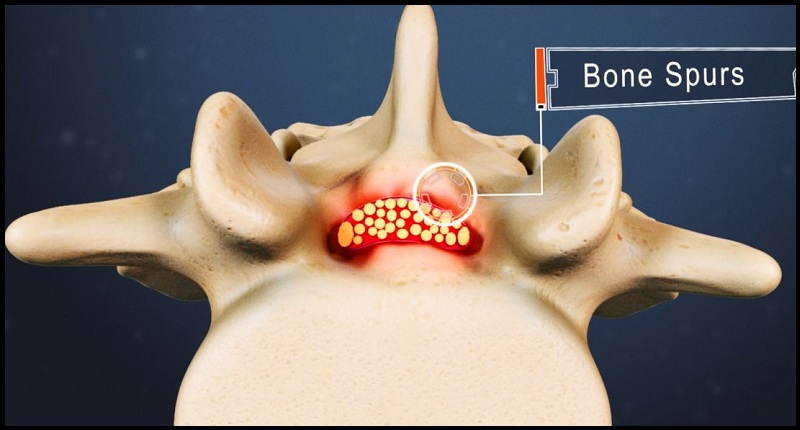Lumbar Canal Stenosis
The spinal column, or the vertebrae, consists of 24 separate bones along with the fused bones of the
sacrum and coccyx. The vertebral column is a strong, flexible rod that protects the spinal cord, supports the head, and provides an attachment for the ribs. There are four major components of the spine: the vertebrae, joints, discs, and nerves.
● Vertebrae : The separate bones of the vertebra link together to form a "tunnel" that protects the nerves and spinal cord. The lumbar vertebrae are under constant pressure from the weight of the upper body. The "wear and tear" of this pressure over a period of time can contribute to the development of low back pain.
● Joints : Each pair of vertebrae is joined by two joints, which provide flexibility and stability within the vertebral column.
● Discs : Discs located between the vertebrae act as "shock absorbers." Discs also function as the "glue" that holds the vertebrae together and provide flexibility within the vertebral column.
● Nerves : At each disc level, a pair of spinal nerves exits and passes into the arms and legs. The spinal cord (which runs through the middle of the vertebrae) and the spinal nerves act as a "telephone" to allow messages, or impulses, to travel to the brain, and then to the arms and legs to control sensation and movement.
Dr. Yash Shah is one of the best spine surgeons for lumbar spinal stenosis surgery in Kandivali, Mumbai. Get relief with expert treatment. Book an appointment now!"
What happens to the structure of the spine as people age?
Intervertebral discs have a fiber-like ring (annulus) and a gelatin-like center (nucleus). In youth, the nucleus is about 70 percent fluid. As people age, the nucleus of the disc begins to "dry up," reducing the effectiveness of the shock-absorbing quality of the discs. As this protection is lost, daily activities can stress the vertebrae, causing the development of bony spurs. Bone spurs can cause the center canal that encases the spine and the side canals, which protect the nerves, to become narrowed.
What are the risk factors for spondylolisthesis?
Risk factors for spondylolisthesis include a family history of back problems. People who are born with a defect in the pars interarticularis bone in the spine (a condition called spondylolysis) are at increased risk of isthmic spondylolisthesis. Other risk factors include a history of repetitive trauma or hyperextension of the lower back or lumbar spine. Athletes such as gymnasts, weight lifters, and football linemen who have large forces applied to the spine during extension are at greater risk for developing isthmic spondylolisthesis.
What is lumbar canal stenosis?
Lumbar canal stenosis is the narrowing of the spinal canal or the tunnels through which nerves and other structures communicate with that canal. Narrowing of the spinal canal usually occurs due to changes associated with aging that decrease the size of the canal, including the movement of one of the vertebrae out of alignment.
The narrowing of the spinal canal or the side canals that protect the nerves often results in a pinching of the nerve root of the spinal cord. The nerves become increasingly irritated as the diameter of the canal becomes narrower.
What are the symptoms of lumbar canal stenosis?
The symptoms of lumbar canal stenosis include pain, numbness or weakness in the legs, groin, hips, buttocks, and lower back. Symptoms usually worsen when walking or standing and might decrease when lying down, sitting, or leaning slightly forward.
How is lumbar canal stenosis diagnosed?
The diagnosis of lumbar canal stenosis is based on a thorough medical history and clinical exam. At times, imaging and EMG tests might be helpful in confirming a diagnosis.
What are the treatment options?
Since the aging of the spine is a natural and irreversible process, non-operative treatment options are aimed at removing pressure from the nerves to allow them to function more normally. Removing pressure from the nerves, in turn, will help relieve the pain associated with lumbar canal stenosis. Non-operative treatment options include physical therapy, medicine, and pain therapy.
● Physical therapy : Physical therapists can work with you to develop an appropriate exercise program. The exercises prescribed by your therapist can help relieve pressure from your nerves, reducing the symptoms of pain and weakness.
● Medicines : Non-steroidal anti-inflammatory medicines (NSAIDs) or pain-relieving medicines (analgesics) might be prescribed to decrease pain and increase your activity level. These medicines might be taken as pills, patches, topical cream/ointment or injections. Over-the-counter pain relievers, such as acetaminophen, might be effective as well.
● Pain therapy : An injection of a cortisone-like medicine into the lower back might help reduce swelling and inflammation of the nerve roots. These injections are sometimes called epidural or nerve blocks.
When is surgery necessary?
A surgical procedure called a laminectomy is used treat lumbar canal stenosis for people who have progressive symptoms that could cause serious damage. Surgery also might be prescribed to treat people who have persistent symptoms, despite medical treatment. During a laminectomy, the central tunnels of the vertebrae are opened and nerve pressure is relieved.
A newer surgical procedure involves the placement of a bullet-shaped metal spacer (x-stop) between vertebral spinous processes, mechanically optimizing the diameter of the spinal canal.


